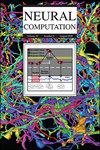用LIF神经元微电路进行神经代码翻译。
IF 2.1
4区 计算机科学
Q3 COMPUTER SCIENCE, ARTIFICIAL INTELLIGENCE
引用次数: 0
摘要
峰值神经网络(snn)提供了传统人工神经网络的节能替代方案,利用各种神经编码方案,如速率、第一次峰值时间(TTFS)和基于种群的二进制代码。每种编码方法都有其独特的优点:TTFS能够以最小的能耗实现快速和精确的传输,速率编码提供健壮的信号表示,二进制总体编码与数字硬件实现很好地一致。这封信介绍了一套基于泄漏的集成和激活神经元的神经微电路,可以在这些编码方案之间进行转换。我们提出了两个应用来展示这些微电路的效用。首先,我们演示了一个数字比较操作,通过从速率编码切换到TTFS编码,显著减少了尖峰传输。其次,我们提出了一种高带宽的神经递质,能够通过单个轴突编码和传输二进制种群编码数据,并在目标位点重建它。此外,我们对这些微电路进行了详细的分析,提供了定量指标来评估它们在神经元计数、突触复杂性、尖峰开销和运行时间方面的效率。我们的研究结果强调了LIF神经元微电路在计算神经科学和神经形态计算中的潜力,为更可解释和更有效的SNN设计提供了一条途径。本文章由计算机程序翻译,如有差异,请以英文原文为准。
Neural Code Translation With LIF Neuron Microcircuits
Spiking neural networks (SNNs) provide an energy-efficient alternative to traditional artificial neural networks, leveraging diverse neural encoding schemes such as rate, time-to-first-spike (TTFS), and population-based binary codes. Each encoding method offers distinct advantages: TTFS enables rapid and precise transmission with minimal energy use, rate encoding provides robust signal representation, and binary population encoding aligns well with digital hardware implementations. This letter introduces a set of neural microcircuits based on leaky integrate-and-fire neurons that enable translation between these encoding schemes. We propose two applications showcasing the utility of these microcircuits. First, we demonstrate a number comparison operation that significantly reduces spike transmission by switching from rate to TTFS encoding. Second, we present a high-bandwidth neural transmitter capable of encoding and transmitting binary population-encoded data through a single axon and reconstructing it at the target site. Additionally, we conduct a detailed analysis of these microcircuits, providing quantitative metrics to assess their efficiency in terms of neuron count, synaptic complexity, spike overhead, and runtime. Our findings highlight the potential of LIF neuron microcircuits in computational neuroscience and neuromorphic computing, offering a pathway to more interpretable and efficient SNN designs.
求助全文
通过发布文献求助,成功后即可免费获取论文全文。
去求助
来源期刊

Neural Computation
工程技术-计算机:人工智能
CiteScore
6.30
自引率
3.40%
发文量
83
审稿时长
3.0 months
期刊介绍:
Neural Computation is uniquely positioned at the crossroads between neuroscience and TMCS and welcomes the submission of original papers from all areas of TMCS, including: Advanced experimental design; Analysis of chemical sensor data; Connectomic reconstructions; Analysis of multielectrode and optical recordings; Genetic data for cell identity; Analysis of behavioral data; Multiscale models; Analysis of molecular mechanisms; Neuroinformatics; Analysis of brain imaging data; Neuromorphic engineering; Principles of neural coding, computation, circuit dynamics, and plasticity; Theories of brain function.
 求助内容:
求助内容: 应助结果提醒方式:
应助结果提醒方式:


